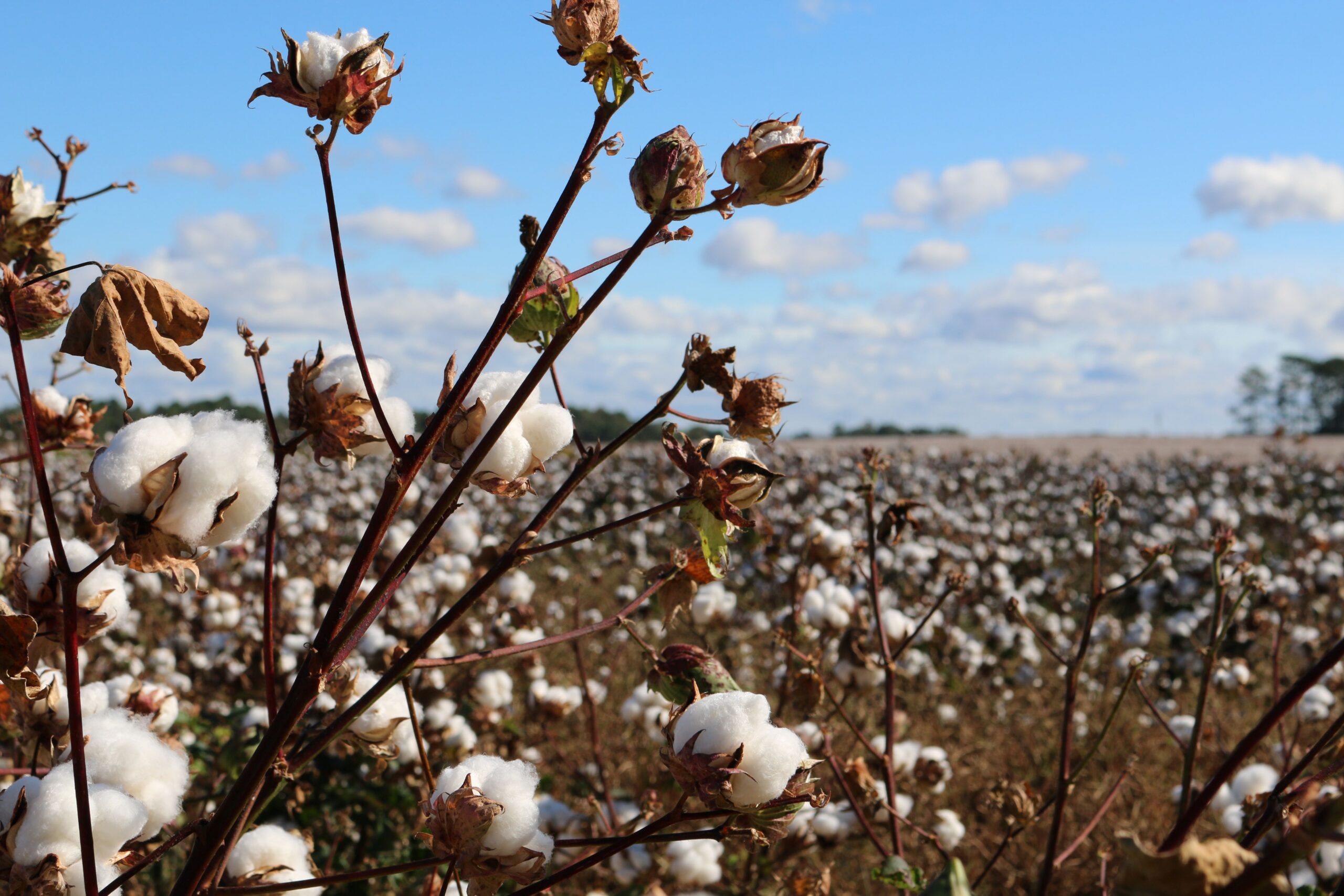The Aaron Cotton Company Museum is located in the state’s northwest corner, in Clarksdale, Mississippi, Coahoma County. Clarksdale is home to Coahoma Community College. The school sits north near the Mississippi River. The town was founded in 1848 and incorporated in 1882. At one time, it served as a vibrant agricultural center where slaves worked the soil. After slavery was abolished, African Americans and the poor sharecropped the land. Over time, the price of cotton fell, blacks migrated north, and machines took over some of the work in the 1940s. Clarksdale became a diverse culture of Lebanese, Chinese, Italians, white farm owners, Jewish merchants, and African American farm laborers.
The first cotton crop commercially produced entirely by machinery, from planting to baling, was grown in 1944 on 28 acres owned by the Hopson Planting Company of Clarksdale, Mississippi. The soil was prepared, crop seeded and cultivated by machines, weeds eradicated by flame, and the crop harvested with a mechanical picker. This technological advancement quickly revolutionized American agriculture and had far-reaching economic and social implications for the cotton industry worldwide, particularly for the Mississippi Delta.
The Aaron Cotton Company was founded by William Edgar Aaron in “The Golden Buckle of the Cotton Belt” (Clarksdale). John Robert Aaron worked with his father in 1957 when the company was known as the Ledbetter and Aaron Cotton Company. John Robert was secretary of the Clarksdale Cotton Exchange from 1958 until it closed in the 1970s. He attended Mississippi State University and Murdock International Cotton School. John Robert was a loan clerk for 45 years with Mississippi County ASCS Offices, preparing and repaying cotton loans for farmers. He was involved in marketing plans for farmers for 50 years. After he retired, he opened and operated his cotton office as The Cotton Museum for 5 years. He kept all the old cotton tables, samples, pictures, and items to show how cotton was handled in the old days and how cotton and the blues were connected. He retired as a cotton broker and died in 2014.
The museum has an impressive collection of antique farming tools and rare photographs. What makes this an exciting place to visit is that it documents how the history of the blues is closely connected to cotton. Cotton manufacturing progressed quickly, but seeing the museum is like looking back into the past. Aaron understood the importance of saving much of the former cotton company’s old equipment, furniture and appliances. The museum is set up like the cotton office of 50 to 100 years ago. This is one of the few places today where you can view various grades and qualities of cotton. You can even buy cotton and cotton seeds and later plant your crop. The Aaron Cotton Company Museum is open by appointment and to the public during the Juke Joint Blues Festival in the town in April. The festival celebrates the blues and brags about their “monkeys riding dogs and pig races.”
